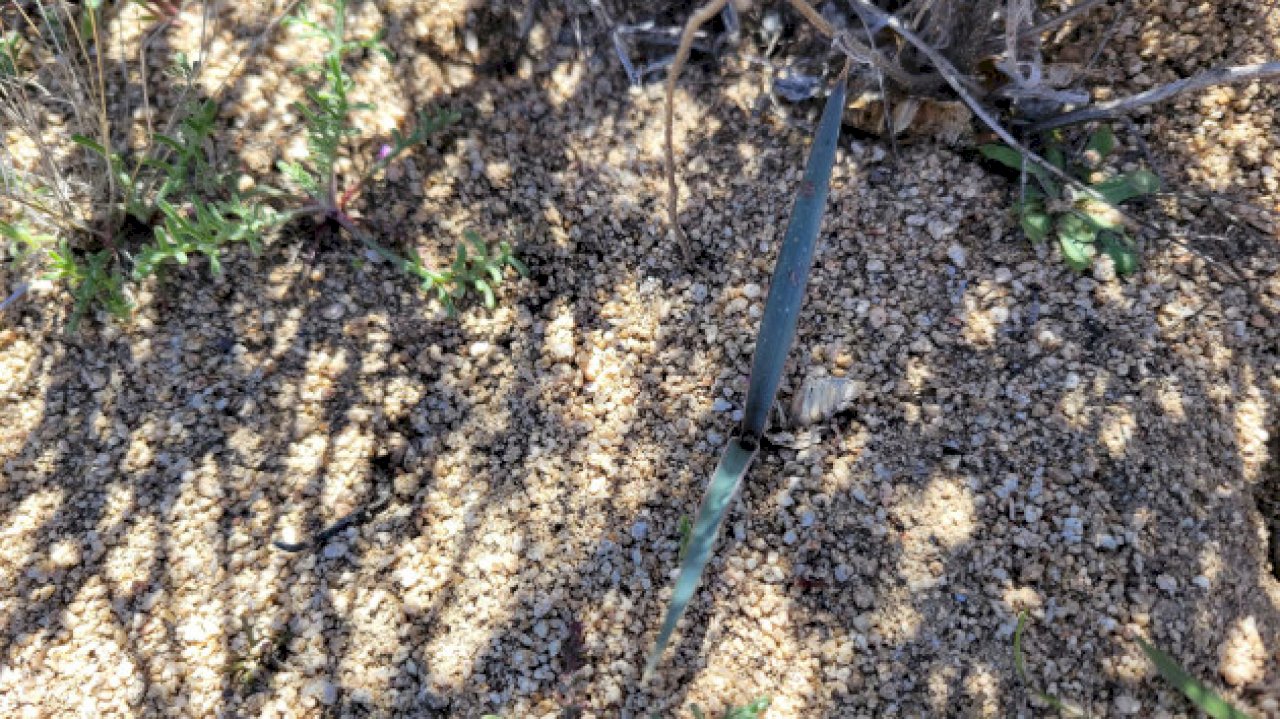Listeners:
Top listeners:
-
 play_arrow
play_arrow
94.3 Rev-FM The Rock of Texas | Where Texas Rocks
-
 play_arrow
play_arrow
99.1 The Buck Texas Country's Number 1 Country
-
 play_arrow
play_arrow
103.7 MikeFM Your Texas Hill Country Mix Tape
-
 play_arrow
play_arrow
KERV 1230 AM
-
 play_arrow
play_arrow
JAM Sports 1 JAM Broadcasting Sports 1
-
 play_arrow
play_arrow
JAM Sports 2 JAM Broadcasting Sports 2
Extra moisture on West Coast allowing climate-sensitive Joshua trees to recover: Experts

(LOS ANGELES) — One of the natural wonders of the world facing threats from climate change may have gotten a fleeting reprieve as a result of extra moisture over the past couple of years.
Populations of the iconic Joshua tree may be showing signs of recovery after several rounds of atmospheric rivers inundated the West Coast — including California’s Mojave and Colorado deserts — with record amounts of precipitation over the past year and a half, experts told ABC News.
Researchers have long warned of the precarious fate of the monocot species, known for their twisted stalks and unusual outlines. By 2070, up to 80% of the population within Joshua Tree National Park could be lost, a paper published in 2019 found.
But while Joshua trees are particularly sensitive to the impacts of climate change, seedlings were seen sprouting from the ground recently, likely due to the abundance of water over the last two years, said Brendan Cummings, conservation director at the Center for Biological Diversity, based in Joshua Tree, California.
The extra precipitation allow the adult trees to better handle the heat due to the additional soil moisture, and there is more likelihood that the younger trees will survive the driest and hottest months, Cummings told ABC News.
And for the first time in at least half a decade, Cummings saw Joshua tree seedlings sprouting from the ground — likely aided by the inches of rain dumped by Tropical Storm Hillary in August, he said.
Many of those seedlings have since been eaten or have died from the scorching temperatures. But their presence is a “good sign,” Cummings said.
The dichotomy between the number of old and juvenile Joshua trees are evidence to a changing climate over the last several decades, Cummings said. About half of the area is occupied by the adult trees, and the other half by juvenile trees.
This means that the adult trees were recruited into the population under a climate that no longer exists — more than 1 degree Celsius cooler than it is today, Cummings said. As those old trees age out and die they are replaced by the current young trees, and the range of the species will be cut in half within the national park, he said, outlining a “best-case scenario” that freezes warming to current levels.
“But I can’t snap my fingers and stop climate change,” Cummings said. “It’s still going to occur, and so we’re going to lose a lot of Joshua trees, even under the most optimistic scenario.”
The primary impact of climate change on Joshua trees is water stress, the experts said. While the region received about 25% more moisture than usual in recent years — much less than other parts of the West Coast — climate scientists predict that prolonged droughts are projected to be more frequent and intense over the coming decades.
Joshua trees are a long-lived species, taking between 40 to 70 years to mature from seedling to reproductive age and living to be several hundred years old, Nick Graver, a biologist at Joshua Tree National Park, told ABC News.
It will take long periods of optimal weather with adequate moisture to stave off the mass die-off researchers are predicting in the coming decades, Graver said.
Even under a normal climate scenario, Joshua trees successfully reproduce and recruit young trees into the population only a few times a century when a convergence of several activities occur: the right temperature, the right amount of rainfall and the presence of the yucca moth — the only species of moth able to pollinate Joshua trees — as well as antelope squirrels, which distribute the seeds. It also needs to be a flowering year, since the species flowers sporadically.
In the spring of 2023, even before tropical storm Hilary rolled through, many Joshua trees began to flower, Graver said. The yucca moth and rodents were both present as well, evident in the seedlings that sprouted following the influx of precipitation in August.
“Those conditions were actually right for seedlings to appear,” Graver said, adding that they have decades before becoming an establish member of the population.
The obligate mutualism between the moth and the Joshua tree is limited to a narrow belt where the trees grow best, as neither can survive at high elevations, but the tree cannot reproduce in low elevations either, according to the University of California, Santa Cruz.
One of the detriments of the extra moisture is the additional growth from invasive grasses in between the Joshua trees that serve as fuel when a wildfire sparks, Cummings said.
The grasses, brought in from grazing livestock decades ago, are artificially fertilized by the smog coming from the Los Angeles region, Cummings said. Now, they allow Joshua trees to ignite en masse when a fire ignites.
“The flush of rain from tropical storm Hillary was great for the Joshua trees themselves, but it also led to this flush of grasses that are now drying out,” Cummings said. “And in another couple of months, the Mojave is going to be a tinderbox.”
The National Park Service is working to treat those invasive grasses, especially along targeted areas, like roads in which firefighters needed to travel on in the event of a blaze, Graver said,
In August, a the York Fire in the Mojave National Reserve severely burned several of the Joshua trees.
More than 1 million Joshua trees were impacted as a result of the York Fire — likely the single greatest mortality event that the species has ever faced, Graver said. At least 1 million trees were destroyed in wildfires between 2020 and 2023, Cummings said.
Wildfires in the region are burning with a never-before-seen ferocity, Graver said.
“There is some history of fire in the Mojave, but not like what we’re seeing right now,” he said. “Not like the fires we’ve seen in recent years.”
Another prominent threat Joshua trees face are direct killing by developers, who have been found to bulldoze them by the thousands to build roads, warehouses, power plants, strip malls and vacation rentals, according to the Center for Biological Diversity.
Joshua trees are not protected under the Endangered Species Act, but several agencies are working to ensure the long-term conservation of these species, according to the U.S. Fish and Wildlife Service. They are currently candidates for protection under the California Endangered Species Act, giving them interim protections while the California Department of Fish and Wildlife analyzes their situation.
More than 40% of the western Joshua tree’s range in California is located on private land, with only a tiny fraction protected from development, according to the Center for Biological Diversity.
Officials in California, including U.S. Rep. Raul Ruiz (D-Coachella) and Sen. Alex Padilla, introduced legislation in April to expand Joshua Tree National Park by nearly 18,000 acres, a move previously recommended by the National Park Service.
“Preserving this vast desert landscape will help ensure more equitable access to nature and recreation, protect biodiversity, and preserve decades of cultural riches, particularly for the local tribal communities,” the officials said in a joint statement.
Copyright © 2024, ABC Audio. All rights reserved.
Written by: ABC News
Similar posts
-
Top popular

Ingram man charged with murder after fatal shooting

Kerr Crime Stoppers offering reward up to $5,000 for information in last week’s non-viable school threat

KISD asks parents to communicate with children about words and actions after ‘copy cat’ threat note found at middle school

City of Kerrville Parks and Recreation reminds citizens that a Red Flag Warning is in effect until further notice

City of Kerrville says that May 7 General and Special Elections will proceed



